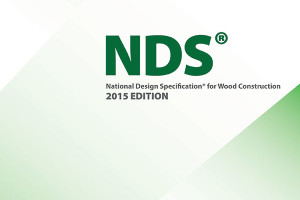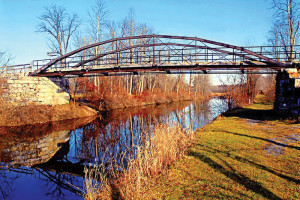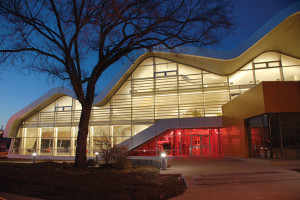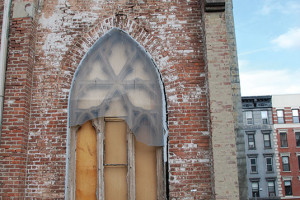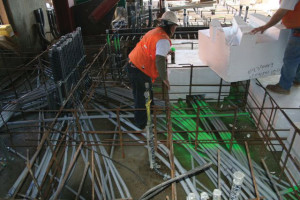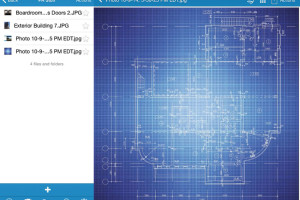The 2015 Edition of the National Design Specification® (NDS®) for Wood Construction was recently published. The updated standard designated ANSI/AWC NDS-2015 was approved as an ANSI American National Standard on September 30, 2014 (Figure 1). The 2015 NDS was developed by the American Wood Council’s (AWC) Wood Design Standards Committee and is referenced in the 2015 International Building Code (IBC). …
Review Category : Articles
Iron bridges in Great Britain date from 1779 when the cast iron Coalbrookdale Bridge was built across the Severn River. It was followed in 1796 with a bridge by Thomas Telford at Buildwas just upstream from Coalbrookdale. Telford also built several aqueducts of cast iron, as well as two other roadway bridges at Craigellachie in 1814 and Betws-y-Coed in 1815. He even proposed a cast iron bridge with a 600-foot span in 1799 to replace the London Bridge across the Thames River. …
Fast + Epp was an Outstanding Award Winner for the Jasper Place Library project in the 2014 NCSEA Annual Excellence in Structural Engineering awards program (Category – New Buildings under $10M).
The City of Edmonton recognizes the value of building high-quality civic facilities for its citizens; hence the architectural response for their newest library that called for a striking free-form clear span facility with maximum daylight penetration. …
How many of you notice the number of significant figures presented within your firm’s calculations? Prior to the advent of pocket calculators, engineers prepared their calculations by hand, supplemented with a slide rule. Their tool of choice was the traditional 10-inch slide rule limited to three figures. The few who owned a 20-inch slide rule could interpolate results to four figures. …
What inspired you to become a structural engineer? For me, it was a fascination with the great buildings of history, like the Parthenon and the Eiffel Tower, and the ingenuity and creativity of the civilizations that built them. Starting with that early inspiration, I have always been driven by a desire to create new structures that have a positive impact on the way people live. …
The Subgrade Modulus, also known as the Modulus of Subgrade Reaction, is a stiffness parameter typically used in defining the support conditions of footings and mat foundations, such as that shown on Figure 1. The parameter is expressed in units of [Force]/[Length]3. Physically however, it is defined as the (contact) bearing pressure of the foundation against the soil that will produce a unit deflection of the foundation. …
Part 1: Foundations
Performing renovation or restoration work on historic houses of worship presents a unique set of challenges for design professionals, and in particular structural engineers. These structures often feature large open-space areas, archaic structural systems and hard-to-define load paths, and varying degrees of deterioration or distress (often lack of maintenance and upkeep driven). …
What Is It and Why Would I Use It
Despite the fact that cellular concrete has been used in the construction industry for nearly a century, it is not uncommon for designers to be unfamiliar with this versatile lightweight product. “What is this stuff?” and “Why haven’t I heard of this before?” are very common questions. …
In construction, time is money. And, when it comes to saving time and increasing productivity, the cloud is a catalyst for change. Arguably one of the most game-changing technologies of the century, the cloud to the computer industry is like utility grids for the power industry – a central fabric that powers the most complex computing tasks. However, it may be the simple things that result in the greatest business impact. Take, as an example, the access and sharing of important business documents and files. …
Good contracts are an important part of any structural engineering firm’s practice. Having a good contract can make your projects run more efficiently and improve your firm’s profits; conversely, an inappropriate or poorly written contract could be disastrous for your firm. This article is the first in a series of articles from CASE to help structural engineers have more profitable businesses by using contracts effectively. …

